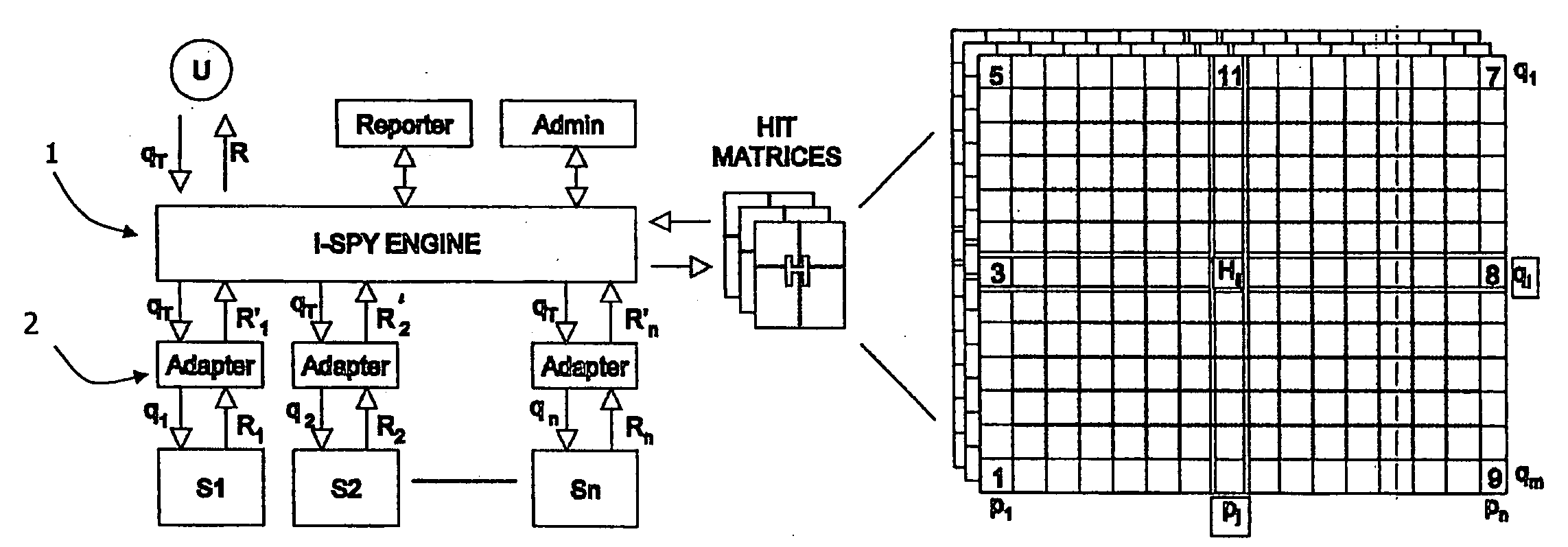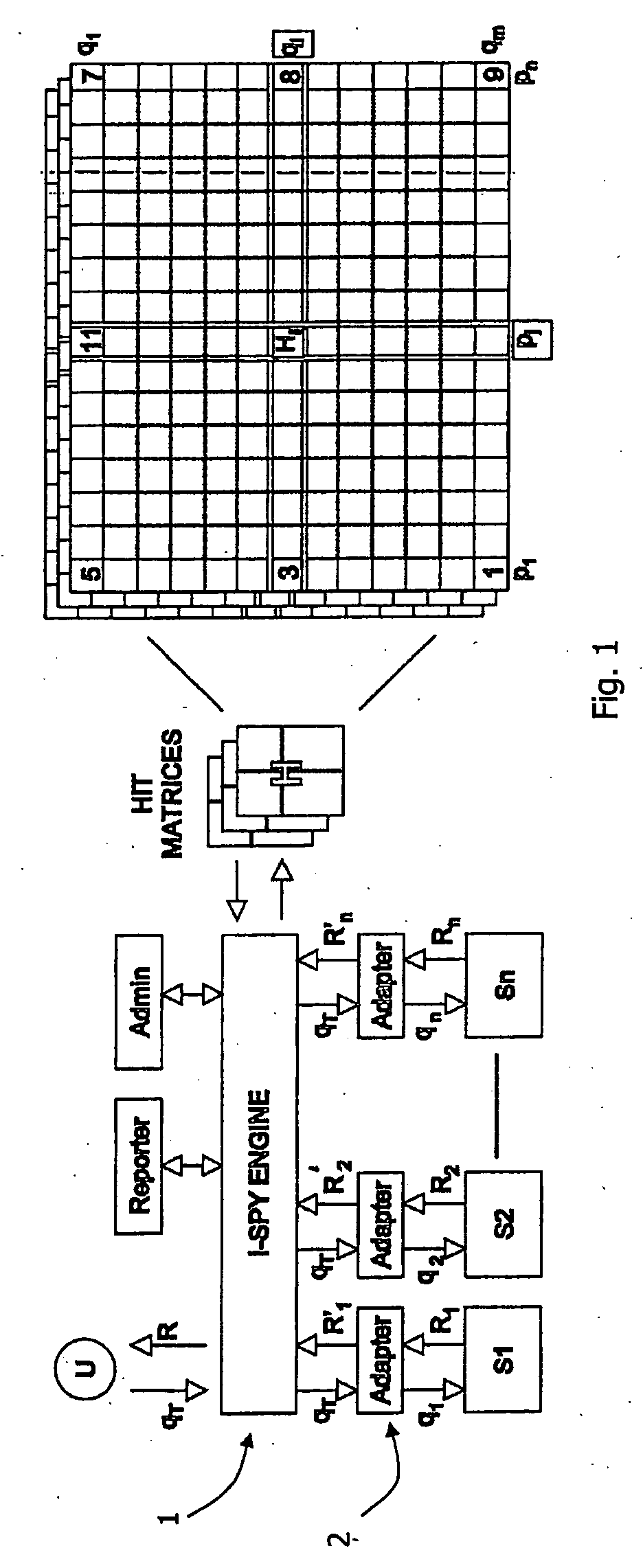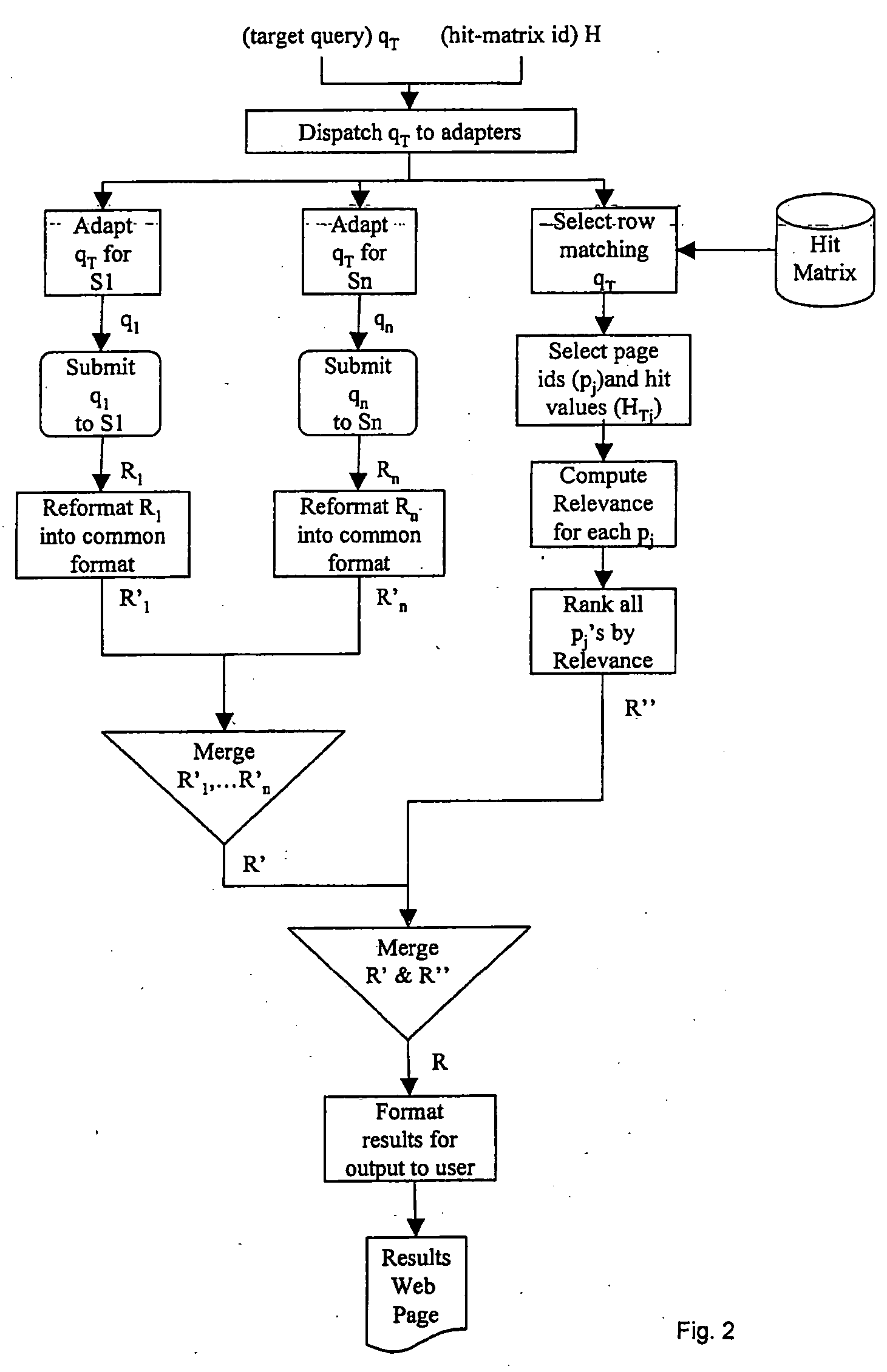Information retrieval
a technology of information retrieval and information retrieval, applied in the field of information retrieval, can solve the problems of not being able to provide complete coverage of search results, the information retrieval techniques that form the core of web search engines are not so well suited to the reality of web search, and a significant portion of searchers are frustrated and disappointed by the performance of search engines, so as to reduce the number of iterations required
- Summary
- Abstract
- Description
- Claims
- Application Information
AI Technical Summary
Benefits of technology
Problems solved by technology
Method used
Image
Examples
Embodiment Construction
[0037] The invention will be more clearly understood from the following description of some embodiments thereof, given by way of example only with reference to the accompanying drawings in which:—
[0038]FIG. 1 is a diagram showing a meta search engine of the invention and components to which it is connected;
[0039]FIG. 2 is a flow-chart describing the operation of the meta engine in one embodiment;
[0040]FIG. 3 is a flow chart showing operation of the meta engine in another embodiment; and
[0041]FIG. 4(a), 4(b), 5(a) and 5(b) are plots illustrating meta engine performance.
[0042] Referring to FIGS. 1 and 2 a meta search engine 1 receives query qT from a user U and transmits responses R. To do so it submits the query qT to up to n search engines Sn via adapters 2. Each of these underlying search engines already exists as a stand-alone search system. In one example they are generic search engines or alternatively they may be more specialised search engines.
[0043] Each adapter 2 transfo...
PUM
 Login to View More
Login to View More Abstract
Description
Claims
Application Information
 Login to View More
Login to View More - R&D
- Intellectual Property
- Life Sciences
- Materials
- Tech Scout
- Unparalleled Data Quality
- Higher Quality Content
- 60% Fewer Hallucinations
Browse by: Latest US Patents, China's latest patents, Technical Efficacy Thesaurus, Application Domain, Technology Topic, Popular Technical Reports.
© 2025 PatSnap. All rights reserved.Legal|Privacy policy|Modern Slavery Act Transparency Statement|Sitemap|About US| Contact US: help@patsnap.com



